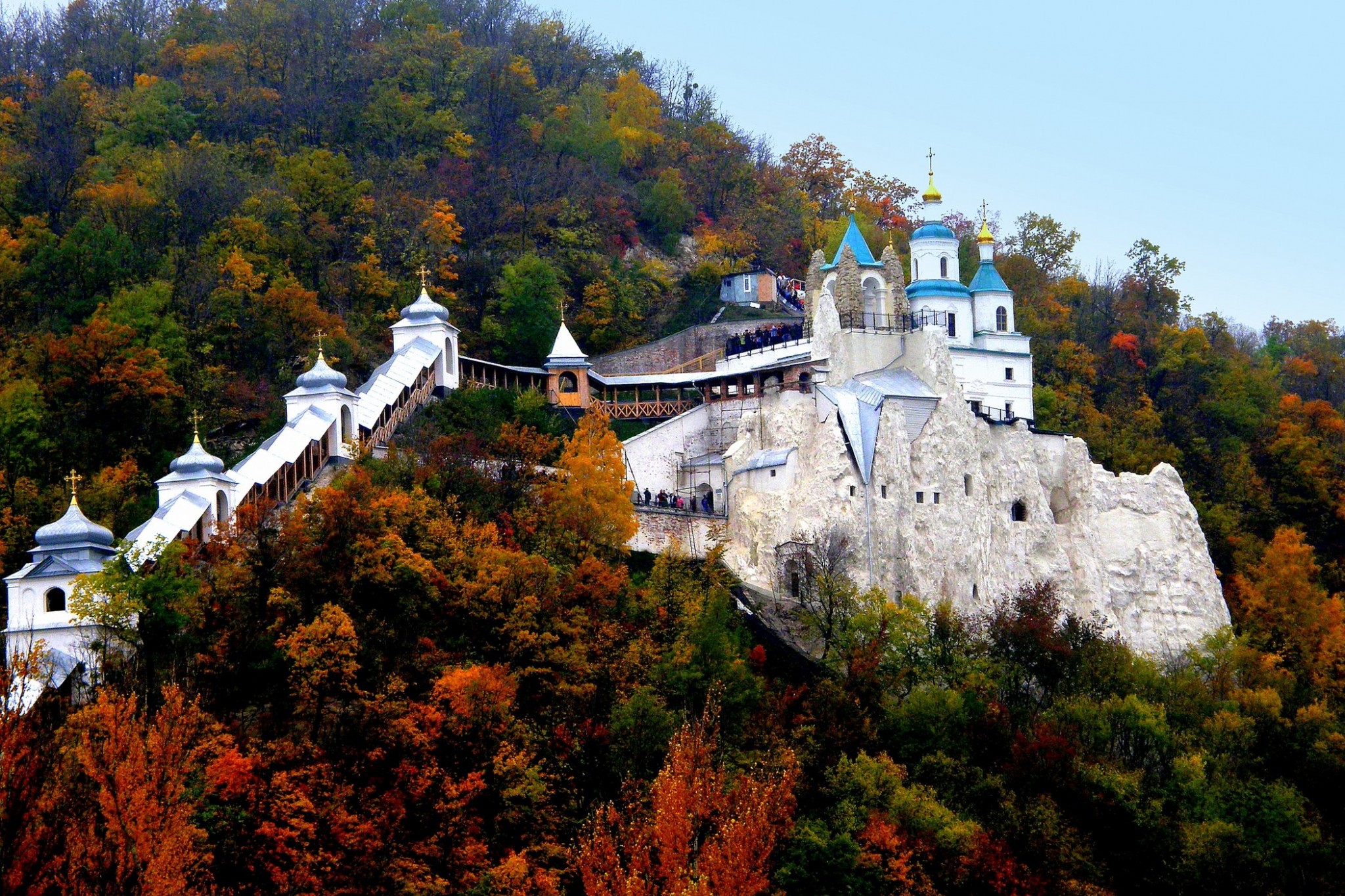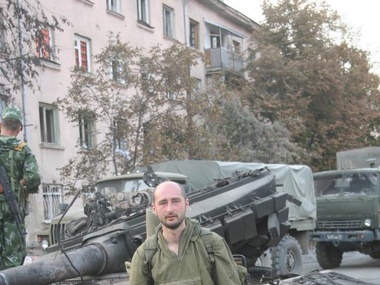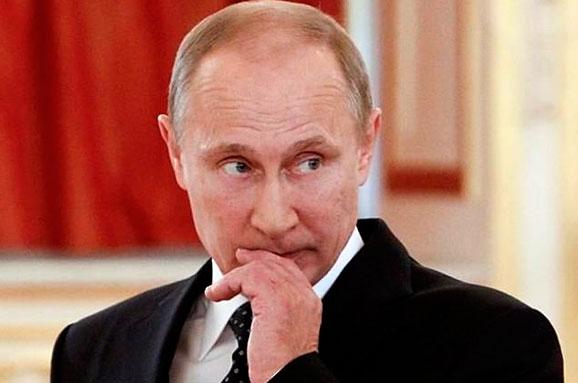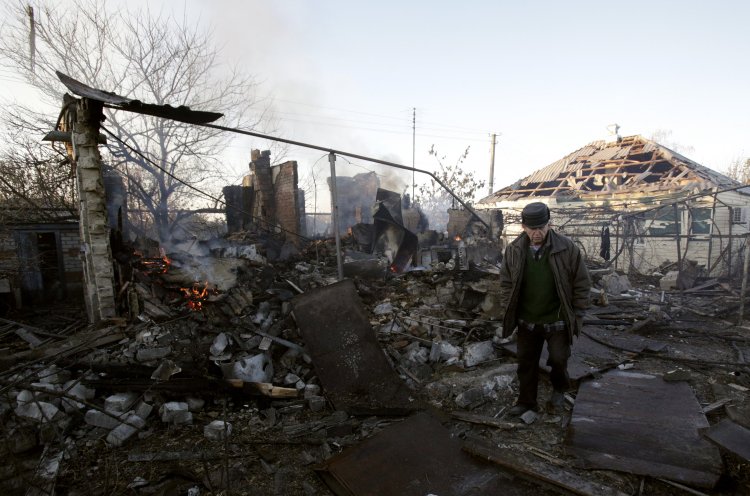Cyril Hovorun urges Ukrainian churches to encourage and engage civil society.
Ukraine has been riven by civil strife. The winter months of 2014 saw a three-month-long anti-government demonstration in the square of Kyiv known as the Maidan, which led to the forced resignation, after four years in office, of Ukrainian President Viktor Yanukovych. It was followed by the annexation of Crimea by Russia and the de facto war in the east of the country, which as I write is still ongoing. These are more than political events. They touch upon the most fundamental experiences of conscience and dignity. They reflect an awakening of civil society—and a reaction that seeks a return to state-dominated public life.
The future of the country hangs in the balance: both the political survival of my nation and the moral and spiritual character of my people. What is needed today, not only in Ukraine but in every post-Soviet country, is church leadership that is clear-minded about the perils of a too-close relation between Christian witness and state power, which results in the substitution of ideology for theology. The single greatest imperative is to encourage and engage civil society.
The Ukrainian Orthodox Church in communion with the Patriarchate of Moscow(UOC–MP) is the largest church in the country, and the only one recognized by the fellowship of the Orthodox churches worldwide. The second largest is the Patriarchate of Kyiv (UOC–KP), which was founded in 1992. The smallest is the Ukrainian Autocephalous Orthodox Church (UAOC), founded in 1918 in the aftermath of the Russian Revolution. Finally, there is the Ukrainian Greek-Catholic Church, a church in union with the bishop of Rome that follows the Eastern rite.

Since the end of the Soviet Union, none of these churches have done much to encourage civil society. In recent years all of them have, to one extent or another, been collaborating with the Yanukovych regime. None has strayed very far from the pattern of relations between Church and state common in the post-imperial Orthodoxy that still pursues the dreams of the Byzantine symphony, the ideal of Church and state working together.
This pattern treats the power system of the state as an indispensable means for church leaders to influence society. It encourages a cooperative deal-making mentality that operates over the heads of the people: if we support your political ambitions, you’ll support our church-building projects and other spiritual ambitions for the nation. Some of the churches, like the UOC–MP, have been more aligned with the state; some, like the UOC–KP, less so. Even the Greek-Catholic Church—more advanced in both its socialteaching and action—has not disturbed the state with its moral teachings.
In sum: Ukrainian Christianity has largely sustained a traditional Orthodox presumption that the state is the only partner suitable for the Church. Civil society has been effectively ignored.
The Maidan, however, forced all churches to reconsider this approach. As large numbers of people from different sectors of society gathered to express their identity as citizens over and against the state apparatus dominated by Yanukovych and his cronies, a new mode of social identity came into being. The Maidan demonstrators constituted themselves as a social body capable of action against the state for the sake of every human being’s aspiration for dignity. They were giving birth to an independent civil society that had to be engaged on its own terms. Faced with an emerging civil society, the churches could no longer assume that they could find their place in society by dealing only with government officials.

The most active church in support of the social awakening was the Ukrainian Greek-Catholic Church. The Patriarchate of Kyiv (UOC–KP) was more reluctant to align itself with the protesters but eventually supported them firmly, offering them its St. Michael’s Monastery as a hospital and shelter for protesters seeking refuge from the riot police. The Orthodox Church under the Moscow Patriarchate tried to maintain neutrality, but some of its priests came to stand with the Maidan. Eventually, with the fall of the regime, the UOC–MP changed its position and supported the interim government.
The slow response of the UOC–MP, my own church, reflects the fact that it is the largest and most established branch of Orthodoxy in Ukraine. It has benefited from a position of social influence since the collapse of the Soviet Union and has become comfortable with a close relation with state power. This paradigm is common in post-Soviet societies. But it is a perilous one. When society emancipates itself from the state—as is happening in Ukraine—the Church risks being isolated. As a close partner of the regime, the Church becomes associated with its crimes. When the regime falls, the Church and its Christian witness are discredited.
This is what happened to the Orthodox Church of Greece after the military junta of 1967–1974.
The regimes of Yanukovych and the Greek colonels were different, but their methods of establishing a dictatorship were similar.
Both usurped power, changed the constitution, corrupted the courts, and relied on the police to suppress dissent. The junta in Greece forced the resignation of the old and ailing archbishop of Athens, Chrysostomos II Hatzistaurou, promoting in his place a young archimandrite, Hieronymos Kotsonas; replaced the canonical synod of the Church with the uncanonical “Aristindin” synod; and replaced the bishops it disliked with others it preferred.
The parallels with Ukraine are striking. The Greek junta ended after the student insurgency in the Polytechnic University of Athens in November 1973, and the Maidan became active after the students of Kyiv were beaten on the night of November 30, 2013, exactly forty years later.
Both the Greek junta and the government of Yanukovych declared themselves to be close to the Church and protective of its interests, yet both violated its basic teachings.
In the course of his first presidential campaign in 2004, Yanukovych relied heavily on the support of the Ukrainian Orthodox Church–Moscow Patriarchate. He lost that election because of the Orange Revolution, the social uprising that forced the nullification of results produced by corruptionand electoral fraud. In 2009, he won and declared his support for the UOC–MP. But by 2012, while angling for reelection, he began to intervene in the Church’s affairs.
He decided to replace the primate, Metropolitan Volodymyr Sabodan, with someonehe believed more loyal to him. The primate, however, did not yield and remained in his position. Frustrated but determined, Yanukovych appointed a crony to serve as “supervisor” of the UOC–MP. This was part of a larger pattern of installing unofficial observers to monitor all areas of Ukrainian society. It was a “mafia model” that allowed a businessman loyal to Yanukovych to meddle freely in church affairs.
Other churches, particularly the Greek Catholic Church, suffered the same fate. As early as May 2010, pressure was applied to the Ukrainian Catholic University in Lviv. In January 2014, the Ministry of Culture sent a letter to Archbishop Sviatoslav Shevchuk warning him that the Greek Catholic Church was in danger of losing its state registration.
As Yanukovych established his control over society, making it an extension of the state apparatus,the churches that once saw themselves as partners became victims of the regime—and all of them came to have reasons to condemn it.
Not all of them did so promptly, however. For a long time, the Ukrainian Church of the Moscow Patriarchate showed little dissatisfaction with the regime. This was true even when Yanukovych’s minions began to crack down on the protests.
Sadly, this behavior echoes the earlier example of the Greek Church, which turned a blind eye to numerous violations of the laws and of human rights, thinking it more prudent to support the junta. As a result, after the collapse of the government, the Greek Church lost its credibility in Greek society. Even after forty years, it is still being accused of collaboration with the dictatorship. I fear the UOC–MP may suffer the same fate in Ukraine in the years ahead. That outcome, however, is not inevitable. A more positive future is possible if the UOC–MP takes inspiration from the Maidan and transforms the traditional Church-state partnership into a vision of the Church relating primarily to civil society, and through thatrelationship influencing the state.
Today, however, the UOC–MP is making the situation worse. Its parishes and monasteries are supporting the rebel militias in the east of Ukraine, sometimes openly, sometimes in covert, coded ways.
Officially, my church stands for the integrity of the country and condemns any sort of violence. It does not, however, exercise meaningful discipline over priests and others who condone and even encourage separatism and terrorism.
There is more at stake here than moral principles, important as they certainly are. The “Russian spring” in the east is a revolution of paternalism. Its ideal, often unarticulated, is for a comprehensive, state-directed system of social organization that protects individuals from the risks of freedom. It reflects nostalgia for a time when the state assumed responsibility for all aspects of life, a time when the state was the society. It would be wrong to interpret this nostalgia as simply a desire to restore the old Soviet system. The neo-Soviet ideology is quite different from the old communist ideology that espoused an official atheism. The nostalgia for a safe, stable past borrows also from the now long-gone Russian imperial ideology.
Read also: How Russian Church serves Kremlin propaganda
This is evident in the ongoing rebellion, sponsored by the Russian state, which expresses itself with symbols and keywords of Orthodox Christianity. The ideology of the “Russian world” has become a mobilizing force for the separatists to kill and torture. There is a video clip on YouTube, for instance, in which a monk teaches the newly recruited soldiers of the “Russian Orthodox Army” why and how to use their weapons: “Antichrist is coming to the Holy Rus. What we’re seeing now—it’s primarily a spiritual war, because the Antichrist comes to Holy Russia, against Orthodoxy.” Then the monk passes to the practical lesson of how to win the war against the Antichrist, whom he apparently associates both with the West and with the Ukrainian Orthodox Christians seeking to maintain their country’s territorial integrity: “I will teach you how you should properly load cartridges—to make bullets flowing into the goal, to destroy the enemy.” He continues,“So the Holy Fathers teach us that when you take the cartridge and load your weapon you should utter the following words of prayer: Blessed Mother of God, save us. Holy Father Nicholas, pray for us. Holy Tsar Nicholas, pray for us . . .”
Read also: Another terrorist training camp held at a Russian Orthodox Church near Moscow
This perverse use of prayer illustrates how the ideology of the “Russian world” adopts the powerful traditions of Orthodox Christianity, but in a way essentially antithetical to their Christian genius. It demonstrates how the faith has been instrumentalized and politicized. The long Orthodox tradition of criticism of Western theology, some aspects of which are legitimate, others exaggerated, has been transformed into a simple-minded anti-Western agenda.This ideology of East versus West encourages the sacrifice of human lives for the sake of a geopolitical agenda. Unfortunately, many church hierarchs inUkraine and elsewhere share this agenda and hesitate to articulate a proper moral evaluation of the war in the east of my country.
The consequences have been deadly. There have been numerous kidnappings and killings of non-Orthodox Christians in the eastern Ukrainian region of Donbas, where armed conflict continues.
The Greek Catholic priest Fr. Tikhon Kulbaka, a secretary of the regional council of churches, was kidnapped and then tortured by the “Russian Orthodox Army” before he was set free after a popular campaign in his support. Less fortunate were four members of a Protestant church, the Transfigurationof the Lord, who were kidnapped on June 8 and murdered the next day. In a remarkable revelation, the senior counselor of the so-called “Donetsk People’s Republic,” Igor Druz, told the BBC that rebel forces had executed unarmed people, stating that this atrocity would help to build a new “social state” based on“Christian values.” This rhetoric sadly resembles the official church statements recently promulgated.
Read more: Four evangelical Christians executed by pro-Russian terrorists for ‘sectarianism and treason’
The Grand Inquisitor in Dostoevsky’s The Brothers Karamazov represents the typical ruler of a neo-Soviet state. He lifts the burden of freedom from his subjects. So far, the majority of people in post-Soviet societies seem happy to remain under the heavy-handed paternal direction of the state. The churches often bless the coercive practices of the post-Soviet “Grand Inquisitors.” They teach that freedom is usually abused. To limit the abuses of freedom,they too quickly teach that freedom itself should be discouraged.
This strengthens authoritarianism and sacralizes the unaccountable culture of government control that has allowed a kleptocracy to flourish. After the Maidan, however, the churches in Ukraine must return to the teaching of the Gospel, or at least of Dostoevsky, about freedom. They need to declare that the refusal of freedom is a sin. It destroys our relationship with God and our neighbors. It also leads to numerous violations of rights and dignity. The post-Soviet churches must become “schools of freedom” that teach citizens how to exercise their freedom in a responsible way that leads to trust and common purpose in civil society.
On January 3, 2014, The Guardian published a letter, signed by many of the leading intellectuals of the world. “Today the Ukrainian Maidan represents Europe at its best—what many thinkers in the past and present assume to be fundamental European values.” It goes on to suggest that “Ukraine needs a European Marshall-like plan that would ensure its transformation into a full democracy and society with guaranteed civil rights.” It is important to remember that the original Marshall Plan was about more than financial aid. It presupposed condemnation of the ideologies that led to fascism and Nazism. Ukraine today needs a similar condemnation of the kleptocratic practices of neo-Sovietism and its ideology of state-controlled civil society.
This will not be easy to accomplish in a country first degraded by communism and then demoralized by two decades of corruption, cronyism, and neo-Soviet ideology. In her book Aufbrüche zu neuen Ufern (A Break-through into a New Dimension), Heike Springhart points the way forward in a social context profoundly compromised by the past. She describes the role that Christian churches played in reeducating postwar German society. Although the majority of the German churches collaborated with the Nazi party, at the war’s end they were the only institution in the country that had the potential to heal the wounds inflicted by Nazism. They represented whatever “clear spaces” were left in the German soul. In Ukraine, the churches can play the same role. They can serve as “clear spaces” in the Ukrainian psyche where a new future can be imagined. The question is whether or not they will.






